Variety and fastening of anchor dowels

The purpose of the dowel is the installation and connection of structures of various types. Where it is required to strengthen the capabilities of a dowel or a screw, an anchor is used, which increases the strength of the fastening. The name of the anchor is translated from German as "anchor" for a reason. He, in fact, reliably fixes the mount, is able to withstand high mechanical loads and dynamic impact. It is usually used when installing attachments, fixing balcony facades and in many other situations.

Peculiarities
Anchoring products perform the functions of fasteners in the construction industry, household, agricultural and many others. Today, manufacturers offer a large selection of anchor dowels. The peculiarity of their work lies in the fixation method - creating an emphasis inside or outside the base array. This is achieved by changing the shape of the fasteners during installation.
Changes can be in the form of expansion, opening of the anchor body, even tying into a knot and the like. The dowel is anchored, due to which its reliable fixation is ensured - it is almost impossible to squeeze it out or pull it out of the facade. Anchor dowels are used on vertical and horizontal surfaces.
They do an excellent job of being suspended from ceilings.
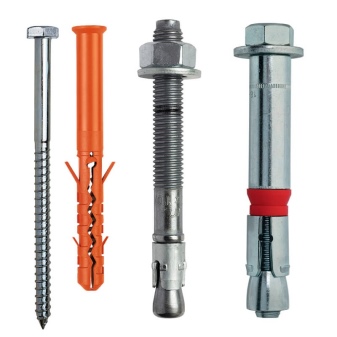

Species overview
There are several groups of anchors.
- With internal and external emphasis.
- Versatile designs. When installed in hollow massifs, they work as spacers, and in solid ones - as anchor ones (the spacer part is deformed, forming an anchor).
- Chemical types are fixed with resins, glue or special compounds.
Anchor structures are of several types with design features in each type. The main and most often used are spacer, wedge and driven. Fasteners have different sizes, but the most popular are dowels with a hex head 8x80, 6x40 mm.
The spacer type has a hook or ring, nut or hex head at the end. This is a stud or bolt with a taper on the tip. The bolt has a sleeve with cuts along the body. The diameter inside the sleeve is smaller than the cone, which prevents it from sliding off the pin.
By rotating the nut, reinforced at the top, the hairpin is pulled to the surface, and since it is not able to come off the bolt, it is spaced due to the cuts.
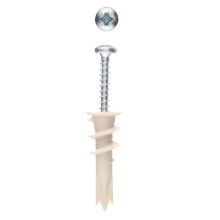
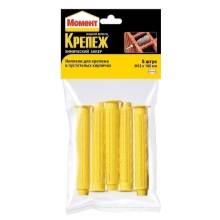
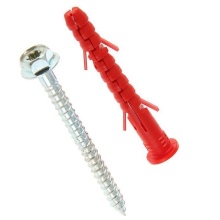
Nut anchors are long bolts with a regular nut and sleeve. It is the length of the sleeve that provides enhanced fixation. The peculiarity of such fasteners allows not only to press something against the wall, but also to add another nut.
Due to the peculiarities of double-spacer fasteners, they are used in porous materials - when screwed, one spacer sleeve enters the other. Since the spacer is located closer to the end of the anchor, fixation occurs in the depth of the surface.
The hex head fastener is similar to the nut version. The only difference is that a bolt is used instead of a nut. The wedge anchor has an expansion sleeve with deformation properties at the end. Screwing in, the hairpin provides expansion of the petals in the depth of the array.
The chemical form, unlike others, requires some time in order to achieve a strong fixation. - a special composition is poured into the drilled hole, a sleeve is inserted and left until the composition is completely dry. Used in soft, crumbly materials.
Driven anchor bolts work according to a different principle: first, the sleeve is inserted directly, and only then the bolt or stud is screwed in.
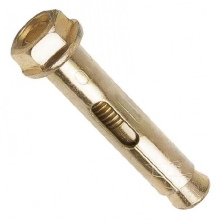
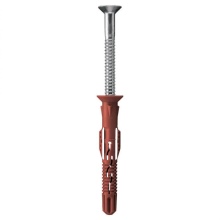

Materials (edit)
Manufacturers offer metal and plastic anchor dowels. Plastic is made from polyethylene, polypropylene and nylon. Metal anchors are able to withstand higher loads than plastic ones.
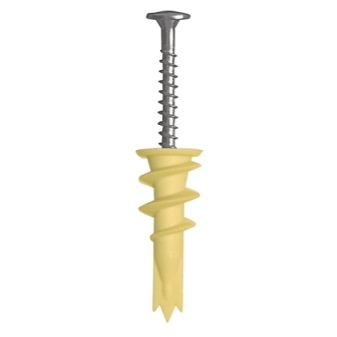
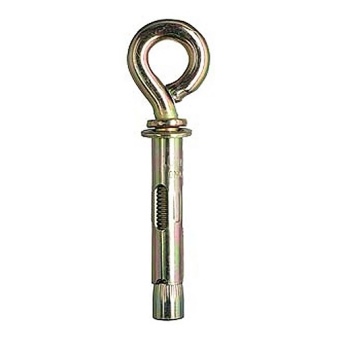
Installation methods
Despite the apparent simplicity, the use of anchor dowels requires compliance with certain requirements, otherwise it is impossible to achieve the maximum level of strength. For the correct installation of the anchor, a suitable drill must be selected. The drill width can be the same as the anchor diameter, but does not need to exceed it. The vibration of a working drill will slightly expand the diameter - this will be enough for installation.
The depth must correspond to the length of the anchor as much as possible - otherwise, the reliability of installation is reduced. The drilled hole must be cleaned of dust and debris. This is done with a compressor, a vacuum cleaner, even a syringe can be used at home.
Only after these conditions are met, the installation and fixing of the device is carried out.
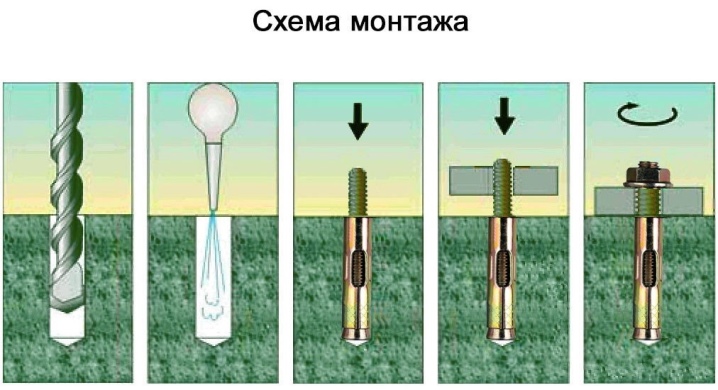
You can use glue as an additional fixation - for example, liquid nails work well. A little of the composition is squeezed into the hole, after which the anchor dowel is hammered. After the spacer, a double fixation of the position takes place with extended ribs and glue.
A good indicator of the reliability of the future fastening is the difficulty during installation of the fastener into the prepared hole. If it enters freely to the full depth, this means that the fastening will be weak. In this case, you need to take a larger diameter.
To drive the fastener into the hole, it can be gently hammered with a hammer, while using a soft backing to maintain its integrity. Anchor with ring or hook can be hit without a spacer. In the case of using a type of fastener with a threaded end, hitting it with a hammer will damage it. The driving technology in this case is as follows: the tip of the stud and the surface of the nut are aligned. A rubber or wooden block is placed under the nut, after which the anchor is driven inward with a hammer.
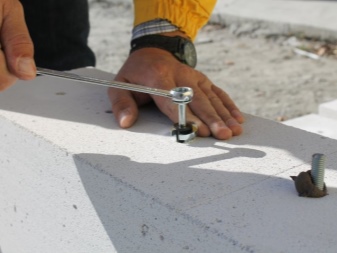
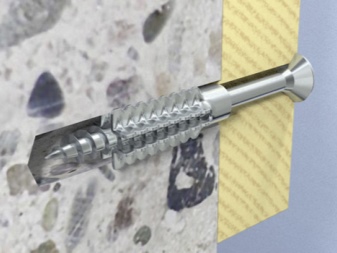
You can learn how to use a chemical anchor bolt in the video below.













The comment was sent successfully.